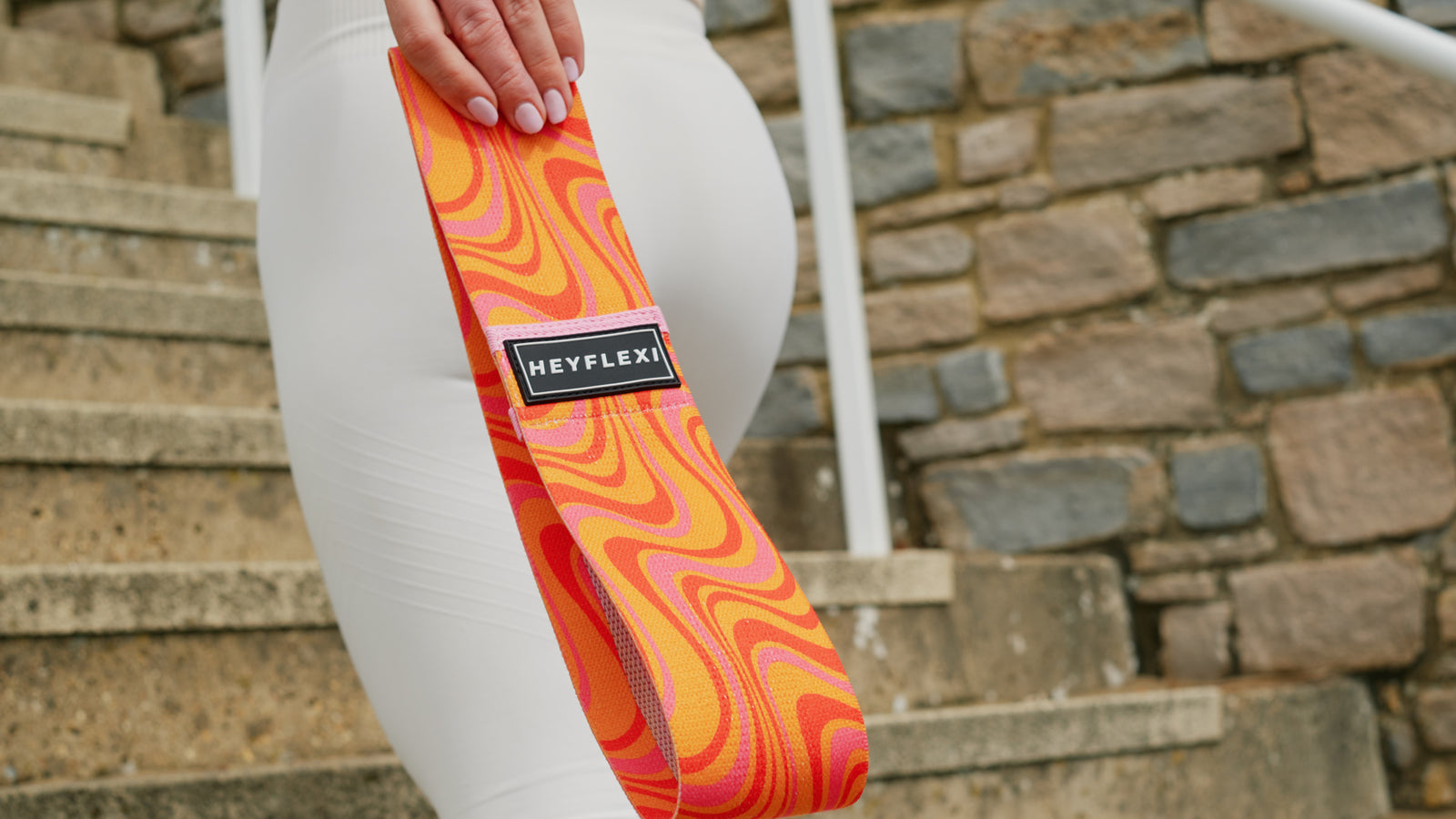Your Cart is Empty
Add description, images, menus and links to your mega menu
A column with no settings can be used as a spacer
Link to your collections, sales and even external links
Add description, images, menus and links to your mega menu
A column with no settings can be used as a spacer
Link to your collections, sales and even external links

The Beginners Guide to Resistance Band Training
September 19, 2023 5 min read
With the recent rise in resistance band training, we wanted to give you low down on why it has become such a popular trend, and why you should incorporate it into your workout regime. So if you’re tired of the same old exercises and want to switch things up, then keep reading and we will tell you how one little band can change your workouts forever.
What are resistance bands?
These bands may look simple, but trust us they are anything but basic. Resistance bands are a great way to build strength, tone your muscles, and improve your overall fitness. But the best part, You can do it all from the comfort of your own home! They come in various resistance levels and sizes, making them a great workout tool for everyone, no matter your fitness level. So whatever your fitness goal may be, resistance bands can help you achieve it.
What are the benefits of resistance band training?
Resistance bands are taking the fitness world by storm due to their enormous amounts of benefits. Here are some of the reasons they have become a must have for every fitness enthusiast.
Time saving:
We know that finding the time to workout can seem impossible. Not anymore, you can complete a whole body resistance band workout in as little as 20 minutes.
Affordable:
Working out on a budget? Well, say goodbye to gym fees and expensive equipment. These bands act as a whole gym in one band and at a fraction of the cost.
Versatile:
There are hundreds of exercises that can be performed with resistance bands. They can be used to do everything from building strength, toning muscle and increasing flexibility to simply improving overall fitness levels.
Customizable resistance:
These bands come in various resistance levels, so whether you’re just starting out or a seasoned athlete, it’s easy to adjust the intensity of your workout. Just select a band to match the level of resistance you need or have a variety of bands to switch between for different exercises.
Joint friendly:
Resistance bands put less stress on your joints compared to other types of equipment, like free weights or machines. This reduces the risk of injury, so if you ever suffer with joint pain or you’re recovering from an old injury, then resistance bands are the safest way for you to workout.
We could go on forever about all the advantages of resistance bands and It’s no wonder they’ve become so popular. Physical therapists and physiotherapists have used resistance bands for decades to rehabilitate injuries and imbalances, but In more recent times they have grown in popularity within the fitness and bodybuilding communities. Due to their unmatched versatility, ability to isolate specific muscle groups and because they are so practical and convenient to use, we predict this popularity to keep rising.
How effective is resistance band training?
One of the great things about resistance bands is that they can be used to achieve almost any fitness-related goal. They prove very effective as a stand alone piece of equipment and are able to target and activate specific muscles, which is often unachievable with standard exercises. When performing exercises with a resistance band, it works the full muscle from extension to contraction, which gives you the best possible results from each movement. These bands may seem small and unassuming but don’t be fooled, they can definitely deliver a powerful punch.
Which resistance is right for me?
A great advantage of resistance band training is being able to chose your resistance level. When it comes to choosing the right one for you, there are a few things you should keep in mind.
- Are you new to training? If so, the light band may be your best option. It provides a small amount of resistance and is recommended for people who are just starting out. It is also a great choice for rehabilitating injuries as it only applies light pressure on the muscle and can gently help work them back to full health.
- The medium band provides a more moderate resistance and is a good all-round option for people who exercise regularly. This is the most popular resistance as it suits most people who have a fairly regular exercise regime and want to start building strength.
- The heavy band provides a much higher level of resistance and is for anyone who has been resistance training for a while and wants to gain substantial strength.
Many people have a range of bands in different resistance levels so they can adjust the resistance depending on which exercise they are performing. It is good to have the option to increase or decrease the resistance to suit each movement, depending on your strength in that particular area.
Here's some beginner friendly exercises to get you started with your new resistance band
Side shuffle
- Start by standing with feet slightly apart and with the resistance band placed just above your ankles. If you want an easier ride, place the band further up.
- Keep your feet parallel and your toes pointing straight ahead.
- Take two or three large side steps to your left then repeat with your right. Make sure that there’s constant tension in the band and don’t ever fully close your legs.
- Repeat for as many as you can do.
Squats
- Loop the resistance band around your thighs.
- Stand with your feet a little wider than shoulder-width apart.
- Squat down moving your hips back. Keep chest and shoulders upright. Go as deep as is comfortable. Hold for a few seconds, return to start.
Lunges
- Place the resistance band around your thighs.
- From a standing position, take a giant step forward and lower yourself down until your back knee almost touches the ground.
- Drive through your front heel and thigh to press yourself back up to a standing position.
- Complete your set on one side then switch legs and repeat on the other side. Slow down your reps to increase the intensity.
Glute bridge
- Lie down face-up on the floor with your knees bent.
- Wrap a resistance around your thighs, just above your knees. Your feet should be hip-width apart, and with your hands at your sides.
- Engage your core so your lower back presses against the floor and push through your feet to lift your hips until they align with your knees.
- Squeeze your glutes at the top then lower your hips to the floor to return to your starting position.
Standing glute kickback
- Loop a resistance band around your ankles and stand with your feet hip-width apart.
- With your hands on your hips, shift all your weight into your left leg and place your right toes on the floor about an inch diagonally behind your left heel, so there is tension in the band.
- Squeeze your core as you kick your right leg back about 6 inches. Keep your knee straight as you do this.
- Return your right foot to tap the floor, keeping tension in the band and complete all your reps on that side.
- Repeat on the other side.
Give resistance band training a try and see the results for yourself! We highly recommend using Heyflexi resistance bands for unbeatable quality.
Also in FLEXI TALKS

Beyond January: Sustaining Your New Year's Resolutions All Year Long
February 04, 2024 3 min read
Read More

